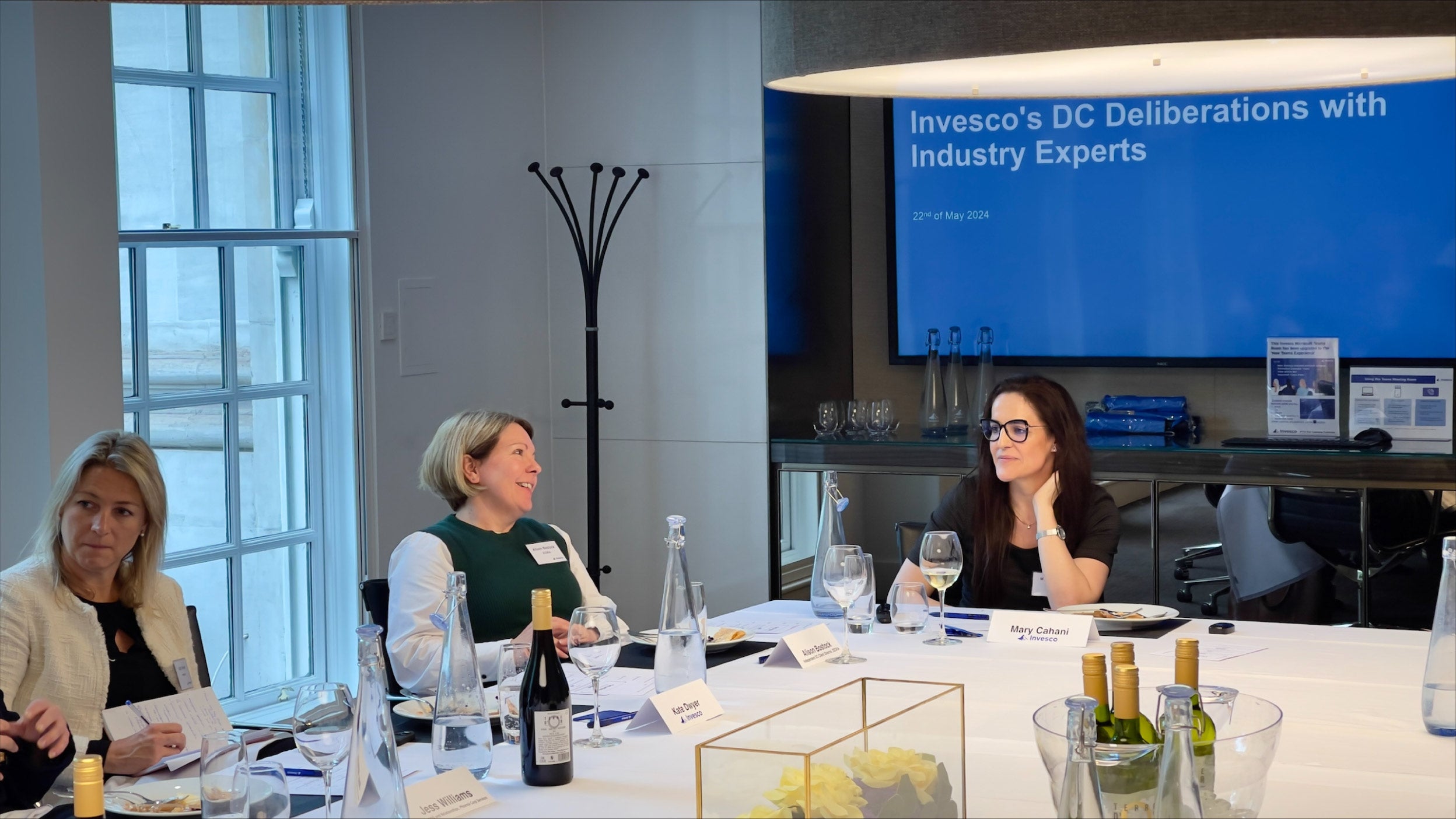Alternatives are underrepresented
Despite being the fastest-growing segment of the pension market, investments in alternatives remain significantly underrepresented in DC plans. This disparity was highlighted by Simon Redman, Managing Director and Head of DC and Wealth at Invesco: “DC is massively under-provided for. A typical DB scheme has somewhere between 15%–25% allocated to alternatives, but if you look across DC as a whole, the average is 2.9%.”
This underrepresentation is a problem for DC members, whose portfolios are generally heavily concentrated. As Anthony Ellis, the Head of Investment Consultancy at Hymans Robertson pointed out, “It's pretty clear. I don't think you get much argument that including a more diversified range of asset classes within a member's portfolio is a sensible thing to do, particularly when you look at the concentration of what their portfolios typically look like at the moment: heavily equity-based, heavily US-based, heavily tech-allocated.”
The low allocation to alternatives in DC plans means that members are potentially missing out on the benefits of diversification and the potential for alpha that investments in alternatives can offer. “Addressing this imbalance requires a concerted effort from industry stakeholders to make alternatives more accessible and integrated into DC plan offering.” Veronica Humble, CIO, NatWest Cushon acknowledges the underrepresentation of alternatives but highlights that the Cushon Master Trust has a 15% target allocation to private assets, of which 12% is already allocated through an LTAF structure, effectively providing access to their members. “I’m very happy with where we are right now, and I’m excited about what’s to come,' she said."
Supportive regulatory environment
The evolving regulatory landscape is playing a larger role in facilitating easier access to alternatives for DC schemes. According to Graham Hook, Head of UK Government Relations and Public Policy at Invesco, there should be significant continuity in the policy objectives of the Labour government. This continuity is important for long-term planning and investment strategies within DC schemes, giving trustees and asset managers the confidence to allocate more resources to alternatives.
The Labour government has pledged to provide regulators with new powers to consolidate schemes that are not delivering value for money. This consolidation is expected to create larger, more efficient schemes with greater capacity to invest in alternatives.
There is still much room for improvement from a regulatory perspective, however. As Ian Pittaway, Chair of the Aegon Master Trust explained, “Member communication and engagement continue to be sidelined from a regulatory perspective. It’s about educating the member on how to make quality decisions. It’s not all about minimising cost for the buyer. Members need to understand that if they invest in better assets, they’ll achieve better outcomes.”
LTAFs: A key area of innovation in DC plans
Long-Term Asset Funds (LTAFs) represent a significant area of innovation within the defined DC pension landscape. The group discussed how the flexible and varied structures of LTAFs are paving the way for broader alternatives adoption and utilisation within the industry.
“What we’re seeing amongst master trusts is that the LTAF discussion has become internalised. Many of these trusts are looking to launch LTAFs themselves and looking to asset managers to provide them with best-in-class asset class exposure. So more of our discussions are now leaning towards that single SMA, or segregated provision of a particular asset class,” said Sachin Bhatia, Head of UK Pensions at Invesco.
Members of the group further explained that while LTAFs are seen as a key solution to the "alternatives problem" in DC plans, their integration into existing platform infrastructures poses challenges. An LTAF, unless you are a large provider like Phoenix, is often ineligible for most platforms due to its liquidity constraints. As such, not all platforms are equally capable of accommodating LTAFs. This discrepancy underscores the need for platform providers to evolve and develop the necessary infrastructure to support these innovative investment vehicles.
However, as Jess Williams, Head of Phoenix CIS pointed out, “It’s more of a perception than reality that platforms cannot utilise LTAFs.” She suggested that with the right approach and mindset, platforms can indeed adapt to accommodate LTAFs. “Ultimately, platforms should be enablers of change and diversification. They shouldn't be seen as barriers,” Williams said. “This perspective encouraged the group to rethink the role platforms can play with respect to the integration of LTAF”
Stephen Budge emphasized the importance of platform flexibility in accommodating LTAF structures. "The key thing with each of these structures is that through white labeling or blending, everything sits inside," Budge said. This flexibility allows for customisation and tailoring of LTAFs to meet the specific needs of different pension schemes. LTAFs come in various forms designed to fit within the frameworks of different platforms and investment strategies. Whether through white labeling or blending various asset classes, LTAFs can come in various structures designed to fit within the unique frameworks of different platforms and investment strategies.
The future of master trust default options
"We believe the majority of master trusts will go down the core and premium route," George Fowler said. One of the emerging trends discussed at the roundtable, this dual-option approach aims to cater to both cost-sensitive members and those seeking potentially higher returns through alternative investments. However, there is a concern that members might gravitate towards the core default option simply due to its lower cost, without fully considering the potential benefits of the premium default. While trustees may feel satisfied that they are offering enhanced options, the reality is that the intended improvement in member outcomes might not be fully realised.
Encouragingly, the group agreed that the industry is gradually moving away from an obsession with fees towards a more holistic view of value for money. The value for money framework, which encompasses not just the cost but also the quality and performance of investment options, is becoming increasingly important.
Our commitment to improving retirement outcomes
We continue to contribute to addressing industry challenges towards improving member outcomes and provide solutions that can potentially lead to better retirement outcomes for members.
Our recently launched Retirement Solutions Hub that includes our Retirement Whitepaper series, and the 4-Life retirement framework, is designed to provide access to our wide range of content covering various retirement topics and emphasises our commitment to delivering innovative solutions for retirees and those nearing retirement. We will also ensure to continuously adapt our content and solutions in alignment with regulatory and member needs and sharing with you all through this hub.
Our broad alternative investment platform plays a critical role in our DC offerings. This platform provides comprehensive access to a variety of alternative investments, including real estate, private credit, and private equity. Our alternative investment strategies are designed to deliver strong returns and diversification benefits, helping to optimise the performance of DC portfolios.
We have also partnered with Just Group plc to launch a Secured Lifetime Income (SLI) product to meet the changing needs of retirees (read more about this significant milestone in our commitment to addressing retirement needs here). By continually evolving and expanding our offerings, Invesco is dedicated to delivering superior value and outcomes for DC plan members.
For more information, please visit our Alternatives Strategies page.









